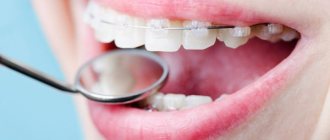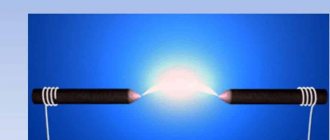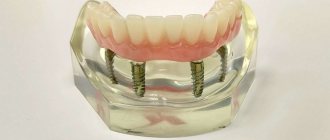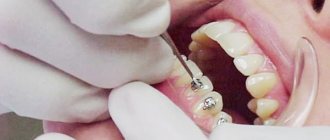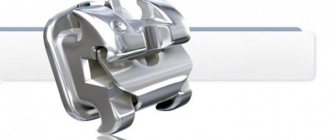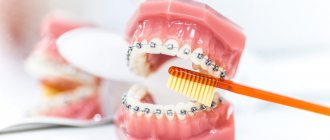The ORMCO online store offers aesthetic braces for installation on the front surface of teeth. People in public professions and patients for whom an impeccable appearance is important not only after completion of orthodontic treatment, but also while wearing braces, often prefer structures of this type. The company's product range includes models of plastic braces Spirit MB and Spirit MB of the Alexander system. ORMCO sapphire braces are represented by the Incpire Ice system.
The main advantage of aesthetic brace systems is their relative invisibility. Unlike metal devices, plastic and sapphire braces do not catch the eye of others and allow patients to lead a normal lifestyle without attracting the close attention of friends and colleagues. Composite braces under the Spirit brand and Incpire Ice sapphire bracket systems belong to the group of vestibular braces. Let's look at them in more detail.
Composite braces Spirit MB and Spirit MB Alexander system
Spirit MB designs
, made of durable plastic, are less noticeable on the teeth than their metal counterparts. To ensure greater strength, plastic aesthetic braces must have a metal groove, which reduces friction and more accurately corrects the inclination and rotation of teeth. Patients who choose Spirit MB will need to temporarily limit themselves from drinking coffee, strong tea and coloring products to avoid discoloration of braces, stop smoking and have their teeth cleaned every six months. For many patients, these design flaws are more than compensated for by the low visibility of the braces.
The Spirit MB base guarantees reliable mechanical fixation of the bracket on the tooth surface. The use of light-curing composite materials is recommended. The model range is represented by the Spirit MB brackets of the Roth prescription with a specially treated base for better adhesion and the Spirit MB brackets of the Alexander system
. The latter are characterized by the presence of rotating wings made of stainless steel.
Incpire Ice System
The category of aesthetic braces also includes sapphire systems Incpire Ice
, characterized by invisibility to others and increased structural strength. Due to the monocrystalline structure, the highest possible transparency is ensured, which distinguishes the system favorably from polycrystalline analogues. The fixation of Incpire Ice braces is based on the mechanical retention of the adhesive in the undercuts of the “mesh” of the base formed by zirconium balls. The system can be secured using any adhesive, but preference is given to light-curing materials that are color-resistant.
Tooth movement is facilitated by the relatively low archwire friction caused by the perfect polishing of the bracket slot. The system demonstrates high resistance to damage to ligature wings. The only disadvantage of Incpire Ice sapphire aesthetic braces is the cost, which is higher than that of Spirit MB plastic systems. Negative characteristics such as fragility, difficulty in removing the structure and high levels of friction characteristic of traditional sapphire brackets have been safely eliminated in the Incpire Ice system.
ORMCO plastic and sapphire aesthetic bracket systems can be ordered in the online store and delivered by express mail to your region within 1 to 5 business days. Please check with our managers for the exact delivery time. An extensive dealer network allows you to independently purchase orthodontic products in any region of the Russian Federation and in neighboring countries from ORMCO dealers.
Metal orthodontic structures in the modern world are used along with newer structures made from special composites. Composite braces are distinguished by high aesthetic indicators, which is why many patients prefer them.
Features of composite braces
Composite braces are products made of polymer plastic. This material differs from conventional plastic in its improved aesthetics, durability and ability to straighten the bite without spoiling the patient’s smile.
These braces are made individually. At the same time, models are made on a computer that perfectly replicate the structure of each tooth and the angle of their rotation.
The shade of braces can be selected as close as possible to the shade of tooth enamel, making them unnoticeable. You can also decorate each bracket with drawings, which is often used when straightening children’s teeth.
Steel grooves are inserted into each composite bracket, which facilitate stronger fixation of the leveling arch and efficiently distribute the load.
To ensure high-quality fastening of the bracket to the tooth surface, a metal mesh (base) is used. Thanks to this, braces can be attached using any fixing composition.
Composite braces can be fixed both on the outer side of the dentition and on the inner side, that is, they can be lingual and vestibular.
Maintenance of plastic braces
Absolute strength and durability - this, as already mentioned, is not about plastic braces. But even these products will correctly correct the bite and will not fail if the patient conscientiously follows the rules for operating the system. Necessary:
- Exclude from the diet foods that can damage the lining of the structure and lead to fragments of the product peeling off from the teeth. We are talking about such foods as smoked sausages, dried fish, candies and marmalade, caramel, chips, nuts, hard cookies, etc.
- Get rid of the habit of chewing gum . Due to its viscosity, it can provoke unsticking of braces and unwanted deflection of the power arches.
- Avoid “colored” drinks , especially sodas. The latter contain, in addition to aggressive pigments, also carbon dioxide. It eats away the surface of weakened tooth enamel.
- Carry out a thorough cleansing of the system after each meal . To ensure that hygiene measures are as effective as possible, it is recommended to use additional dental accessories (brushes, floss, brushes, irrigators).
If the treatment is taken responsibly, the patient can easily keep the braces in proper form, avoid breakages and get excellent therapeutic results at a very reasonable cost.
Advantages and disadvantages of designs
Let's look at the main advantages of composite braces:
- High aesthetics. If there is a metal groove in the braces, their aesthetic properties deteriorate, but their strength and reliability increase.
- Such structures retain their original shape. Therefore, a patient who has received composite braces can eat moderately solid foods without significantly cutting down his diet.
- The presence of a streamlined shape. The tissues of the gums, tongue, palate and cheeks are not injured.
- Do not cause allergies, non-toxic, do not oxidize.
- They can be made in the form of aligners - transparent covers that are worn over the entire dentition. In this case, the pressure on the enamel is minimal; in addition, you can fill the structure with a bleaching composition and carry out bleaching along with leveling.
- Excellent price-quality ratio. They cost much less than their ceramic and sapphire counterparts.
- Possibility to choose a color close to natural.
- Sufficient resistance to chips and fractures.
- Possibility of use in childhood (after 11 years).
- Do not cause discomfort during treatment.
The negative aspects of such products are as follows:
- The ability to absorb dyes and be stained by them.
- Low wear resistance. The structures gradually wear out, so they are not installed for a long time. The maximum wearing period is one year.
- They are used only for mild forms of malocclusion. They cannot handle severe jaw defects.
Manufacturing companies
Composite braces are produced by the following companies:
- “Elan” - the relief of natural enamel is repeated as much as possible, so the fastening is very reliable using metal elements. These braces cost from 480 rubles.
- “Spirit” - metal structures are added to plastic, which significantly reduces the load on the plastic. One such brace costs approximately 500 rubles.
- “Silkon” - fastened without additional compounds, the material has high strength, uses a special support platform, and there are no micropores. One such brace costs from 550 rubles.
- “Avalon” - equipped with a special groove made of high-quality silver alloy. They are attached to the teeth using a special technique that significantly increases adhesion. They cost approximately 590 rubles per tooth.
- "Rave" - made of reinforced durable plastic. You can choose different colors and shades. Equipped with metal locks. The cost is in the range from 550 to 600 rubles.
- "Vogue" ("SAG") - made of strong and durable plastic that is resistant to staining. They have a smooth surface. They cost from 450 to 550 rubles.
Installation steps
The initial stage, which involves the further installation of composite braces, is a consultation with a specialist. After this, a visual inspection is carried out and they proceed to the preparatory stage.
The main part of preparing the oral cavity for installation of braces is its complete sanitation, which includes the following:
- Treatment of diseases of the gums and teeth, if present.
- If there are inflammatory processes, they are removed.
- Professional teeth cleaning to remove tartar and plaque.
The specialist also advises the patient on oral hygiene issues when braces will be in place and gives recommendations.
After completing all preparatory procedures, installation begins. To do this, use a special oral expander, which allows access to hard-to-reach places and simplifies the work.
This is followed by drying the teeth, which will facilitate high-quality fixation of the glue. Cement is applied to each bracket, which can harden under the influence of ultraviolet rays. And they move on to attaching each lock to a tooth.
After the installation phase comes the adaptation time. 2-3 hours after installation, pain in the jaw is possible. There may also be a feeling of severe loosening of the teeth. This is only evidence of the successful start of the correction. The discomfort may last for several days; in case of severe pain, painkillers are allowed to be taken during this time.
Installation
Don’t think that when you go to see a dentist, you will immediately get braces and be sent home. First of all, your doctor will take an impression of your upper and lower jaw, from which they will make a plaster model. Based on this, he will build a treatment plan. It is even possible to remove completely healthy teeth, for example, small molars that do not fit in a narrow jaw.
Only after this the patient is offered the choice of using white or colored braces. Then the dentist removes soft and hard deposits on the teeth, and then proceeds to install plastic braces.
If you decide that the dentist will install all the braces at once, then their installation will begin with the upper jaw. First of all, the drying of the tooth enamel begins. First, the etchant is applied for twenty seconds and after twenty seconds it is washed off, making sure that the substance does not get deeper into the oral cavity. Then they dry again and apply a substance to bind the materials. The bracket is lubricated with a special substance for reliable fastening and connected to the tooth enamel. The excess connecting substance is removed and shined through for twenty seconds, the glue hardens and secures the lock. And so on with all the teeth until the end.
Then the ligating arc is pulled through the fastening part. At the end of the dentition, it is finally installed and the excess is cut off so that it does not scratch the oral mucosa. After this, the last stage of installation occurs, when an elastic band is put on each tooth.
After the procedure, the doctor schedules a time for the next visit to check the condition of the teeth.
Advice! During treatment, you should definitely give up chewing gum and sweets. Otherwise, the braces may come off in the first days after installation.
Correct operation
With proper use of composite braces, their service life will increase significantly. To do this, you need to follow all the doctor’s recommendations and perform good oral hygiene.
On a note:
Braces and teeth should be thoroughly cleaned of food residues after each meal to avoid caries. It is also recommended to rinse your mouth with special compounds.
In addition, viscous and hard foods should be excluded from the diet so as not to cause structural failure. It is also better not to consume foods and drinks that contain dyes, so as not to stain the plastic of the braces.
If earlier people were reluctant to install braces because of their external ugliness, now the orthodontic market offers its clients attractive systems. They are not so obvious and are distinguished by their elegance. These are no longer bulky iron structures in the mouth, but modern aesthetic braces. That is, systems that are invisible and easy to use.
Adaptation and proper care
After installing the braces system, discomfort may occur due to the presence of a foreign object in the mouth.
Typically, the patient may present the following complaints:
- the appearance of aching pain (noted in the first hours after installation);
- irritation of the mucous membrane as a result of rubbing;
- feeling that the dentition has become unstable and loose;
- slight violation of diction.
These symptoms go away on their own within 10 days.
Proper care of orthopedic products is ensured by following the following rules and recommendations:
- Regular visits to the dentist will allow you to correct the correct position of the elements. This will also help to promptly identify and treat inflammatory diseases.
- Cleaning the mouth should be done after every meal. If you don’t have a toothbrush, you can use floss (special thread), rinses or elixirs.
- Professional cleaning in dentistry. To prevent the formation of tartar and remove plaque, it is recommended to perform this procedure once every 6 months.
- Restriction in the diet involves the complete exclusion of sticky foods (sweets with nougat, toffees, viscous jams). Solid food should be crushed into small pieces. Avoid eating foods with large temperature differences.
Composite braces
These are braces made from modern composite materials. A fairly functional and discreet system has both its advantages and disadvantages. Among the advantages are the following criteria.
- High aesthetic qualities: a bracket system made of composites completely copies the natural color of tooth enamel.
- Attractive affordable price - it is significantly lower than that of sapphire and ceramic analogues.
- They cope well with minor malocclusions.
- The material is plastic, so it is sufficiently resistant to chipping.
But along with all their advantages, composite braces also have certain disadvantages. First of all, this is the insufficient rigidity of the material. It cannot cope with serious disorders of the jaw apparatus, which is why it most often has to be strengthened with a metal groove. This solves the problem of increasing pressure on the teeth, but does not save from poor wear resistance.
The bracket system made of composites has another drawback - it tends to be stained by food and drinks, so over time it loses its original color and attractiveness. You can evaluate the appearance of the aesthetic braces system by looking at the photo.
Advantages and disadvantages of using composite materials
Composite braces are actively used in the process of bite correction, but like other orthodontic structures, they have both advantages and disadvantages. Among the main advantages are the following:
- affordable cost (especially in comparison with ceramics and even more so with sapphire);
- a variety of color and tone options in selection (the system on natural tooth enamel, with which the braces practically merge, will not be visible);
- do not become stained during operation (no significant color change occurs);
- can be used for correction in childhood (from 11 years);
- there is no discomfort during the treatment process.
The disadvantages of plastic braces are:
- the resulting plaque causes a change in the color of the system (it is necessary to regularly carry out hygiene procedures, and also stop using coloring elements);
- frequent breakdowns (in most cases a complete replacement is required);
- plastic is a fragile material, so you will also have to roll away from solid food;
- service life is shorter than that of other braces systems;
- Maximum attention to the food consumed is required.
The choice of this option is optimal if you need to remove minor occlusion violations or if a person wants to hide the very fact of using braces, but there is no money for more expensive invisible structures.
Ceramic braces
Aesthetic braces made of ceramics are not much more expensive than their metal counterparts, but they are much less noticeable on the teeth. A system made from this material has a number of advantages.
- Relatively low cost, which is accessible to almost everyone.
- The color of the ceramics exactly matches the natural tone of the enamel.
- Braces made from this material are completely devoid of shine, which allows them to practically merge with the teeth.
- They do not cause physical or moral discomfort.
However, this material is not without its drawbacks. Firstly, the plaque that forms on ceramics over time can change its color. Therefore, people often have to give up strong tea, coffee and other coloring products. Secondly, this is a rather fragile material that requires careful handling. You can evaluate the aesthetics of ceramic braces by looking at the photo.
Positive and negative sides
Despite the fact that the list of indications for the use of silicone devices is small, this method of correction is preferred by most patients.
The advantages of using silicone braces include:
- Aesthetically pleasing appearance , thanks to the use of devices invisible to prying eyes. People can only see a foreign device in the mouth in close proximity.
- High protection against injury . The surface is smooth, which prevents injury to the cheeks, mucous membranes, and gums.
- Environmentally friendly material is unable to cause a negative reaction in the body. There are no allergic manifestations due to the hypoallergenic nature of the device.
- Reliability . A distinctive feature of mouthguards made of this material is their special strength, which provides protection against cracking of the device under heavy load.
- Ease of use will allow you to remove/put on silicone braces yourself.
- Easy care of the device and the oral cavity. The process of cleaning and getting rid of food debris is not difficult at all. Due to the availability of access to the teeth, even when caries appears, the patient can treat a damaged tooth at any time.
However, not everything looks so attractive - a significant drawback is the price. Original devices can only be manufactured in licensed clinics in America and Europe, which leads to the high cost of the device. Since during the course of treatment the patient is forced to constantly change the aligners, up to 50 times during the entire course of treatment, the final cost of the device becomes significant.
Despite the high price, silicone braces will effectively and least painfully get rid of bite problems.
Sapphire braces
Aesthetic braces made of sapphire are the most popular due to their attractive appearance. This artificial stone is completely transparent, shiny and very beautiful. Let's look at all the pros and cons of sapphire braces. The obvious advantages of this material include the following advantages.
- Upon contact with saliva, such devices become crystal clear and completely invisible on the tooth enamel. When light hits them, they shimmer like a gemstone.
- Quite durable material is used.
- Sapphires do not change their color when in contact with dyes, so a bracket system made from them retains an attractive appearance throughout the course of bite correction.
- These devices do not cause discomfort, do not injure the oral cavity and have no contraindications for use.
The disadvantages include the rather high cost of the design and the long period of wearing, which often lasts up to 2 years. The following photo will help you make sure that these orthodontic devices are absolutely invisible.
Indications for use
The use of an orthodontic device is not limited by a person’s age or health characteristics. The absence of a direct effect on the body allows you to do without a comprehensive study of the patient’s condition, and also does not require correction of any negative consequences.
In the following cases, silicone mouthguards are indicated for wearing:
- Children . Since this category of patients is characterized by increased activity, which often leads to falling, jumping, sudden movements, and tasting various foreign objects, complex metal structures of conventional braces with a complex system of locks, ligatures, and plates are not recommended. The danger lies not only in the breakdown of the device, but also in the risk of ingestion of rebound elements. The advantage of a silicone device is its incredible strength, and there is absolutely no risk of swallowing the device.
- Teenage years . Correcting the bite and straightening the dentition at a young age is simpler and easier, because The bone tissue is not yet fully formed. The use of conventional braces is limited by the great claims teenagers have about their appearance. Teenagers refuse to wear bulky braces so as not to be ridiculed by their friends. The silicone version can not only cure the bite, but also will not spoil the child’s appearance.
- Popular personalities who often come under the spotlight of public attention. In such a situation, standard braces are not suitable due to their visibility, and lingual braces will cause discomfort and difficulties with diction. Devices made of silicone are completely invisible and will not cause the slightest discomfort.
- Patients who refuse to spoil their appearance due to wearing conventional braces. Aligners can influence the formation of a correct bite unnoticed by others. It should be taken into account that the skeletal system of 40-year-old patients and older people is already formed and is highly durable, which makes the use of a silicone device for straightening teeth impossible and useless.
Colored braces
Colored braces are especially popular among children and young people who follow fashion and like to look original. What are their features?
- It is not the braces themselves that have bright colors, but the ligature, that is, elastic bands.
- The shade can be completely arbitrary; it is permissible to use several colors at once. It all depends on individual preferences.
- This interesting solution will allow children and teenagers to overcome embarrassment and get used to braces. Looking at the photo, you can note that the multi-colored braces look quite original.
Lingual braces
For those who are categorically against wearing even barely noticeable transparent braces, experts have developed a special system - lingual. It is invisible due to the fact that it is fixed on the inside of the teeth. This innovative development is the pinnacle of technology when it comes to aesthetic braces. Absolute invisibility and maximum aesthetics are guaranteed.
- The good thing about this system is that while wearing it, inflammatory diseases occur much less frequently. It does not injure the tongue and mucous membranes of the oral cavity and does not cause discomfort.
- Correcting minor deviations requires short-term wearing - about six months or a little more. With severe defects, this period can increase to 2.5-3 years. But since patients get used to lingual braces very quickly, this does not cause them any inconvenience. The following photo will help you understand what such a design looks like.
From our article, you learned about all the types of aesthetic braces that an orthodontist can offer you during a consultation. To conclude, we invite you to watch an interesting video that will help you understand how these systems work.
Not so long ago, people did not seek to correct bite defects due to the bulkiness and unsightliness of braces, and sought help only for severe problems.
Now orthodontists can offer patients a choice of several options for corrective devices, differing in price, type of fastening and material of manufacture.
The most popular are aesthetic devices, including composite braces.
Recommendations for caring for mouthguards
The duration of wearing silicone orthodontic products is usually at least a year, since due to insufficient rigidity they slowly move teeth into the desired position. Therefore, you need to pay enough attention to the care of your mouthguards and teeth.
- The mouthguard must be removed while performing hygiene procedures and eating.
- After eating, before putting the aligner back on, be sure to brush your teeth or at least rinse your mouth well.
- A special container is provided with the product in which you need to store the mouthguard when not in use.
- Be sure to follow the recommendations given to you. If any problems arise while wearing it (the mouthguard falls off or causes discomfort), then contact an orthodontist.
The price of custom clear aligners can vary widely. Depending on the material and methodology used, it can range from 80 to 300 thousand rubles. In turn, the price for standard models is very affordable, but they are used infrequently, as they are not suitable for all patients.
There are many models of aligners from different manufacturers. Your doctor will help you make your choice. As an example for a visual representation, we invite you to watch a video about the popular Star Smile aligners.
General overview
Composite braces are one of the budget options for aesthetic orthodontic systems. Their aesthetics is ensured by the ability to select the color of the material as close as possible to the natural tone of the patient’s teeth.
Externally, the composite structure is no different from expensive ceramic braces. You can also apply a design to each lock, which is often used when correcting the position of teeth in children.
Models are made only individually from a polymer composite, which differs from conventional plastic in improved aesthetics and increased strength.
The lock is equipped with a metal groove, which reduces the load on the jaw bone, as the arch slides freely.
The base of the bracket is metal, made in the form of a mushroom-shaped mesh. This configuration is necessary to create high-quality adhesion to the tooth surface.
At the beginning of treatment, a thin arch is usually placed, which is replaced over time by a more rigid one. Additional elements of the correction apparatus are rods, springs, rings and elastic chains.
To secure the braces to the enamel coating, only special glue is used, which allows you to maintain the overall aesthetics of the smile and the device itself.
The peculiarity of the design is the possibility of using two types of fixation on the teeth:
- from the lingual side
, i.e. located between the tongue and the inside of the teeth; - from the vestibular surface
facing the vestibule of the oral cavity (for chewing elements this is the buccal surface, and for the frontal elements it is the labial surface).
Most often, this design is used to correct minor defects in the dentofacial apparatus, or to correct the bite in children.
External and design features
Externally, the composite bracket system does not differ from more expensive ceramic structures.
The design can be selected in such a way that its color cannot be distinguished from natural enamel. Also, if the patient wishes, the elements of the brace can be decorated with drawings (relevant for children). Design features suggest the use of two types of fastening - lingual and classic vestibular. Braces are made individually for each tooth that needs correction. They are a lock with a metal groove in the center, which reduces the load on the plastic parts of the structure.
The metal base is mushroom-shaped mesh. The main task is to create high-quality adhesion of the bracket to the surface of the tooth being corrected. Allows you to install braces using any available composite material.
Arch – designed to connect braces to each other, as well as mechanical impact on them. During the treatment process, thin arches are used at the initial stage, then they are replaced with elastic arches. Additional elements include elastic chains, springs, rods, and rings. They are used in particularly advanced cases and with pronounced defects.
A special feature of the lingual plastic system is its fastening - it is carried out from the inside of the teeth. This allows you to hide its presence from prying eyes.
Special glue is used to attach the braces, so no additional elements are used, which helps maintain aesthetic appeal.
Vestibular systems are attached to the outside of the teeth, but the plastic elements look natural and do not spoil the appearance, allowing you to quickly correct existing dental deficiencies.
Pros and cons of devices
Composite braces are actively used in orthodontics. But, like all existing models of bite-correcting devices, they have some disadvantages and advantages.
Among the advantages of this device, experts note the following indicators:
- Affordable price
(especially when compared with ceramic or sapphire models). - A fairly wide range of shades of the material
, allowing you to very accurately match the color of the plates to the enamel. - Resistance to breakage and chipping
due to the plasticity of the material. - Preservation of the original form
throughout the course of correction, which allows the patient to practically not change his usual diet. - Safety.
The tongue, gum tissue, cheeks and palate are not injured by the elements of the device due to its streamlined shape. - Hypoallergenic
. Does not cause allergies and does not emit toxic compounds. - There is no discomfort during treatment
, which is especially important for children.
The disadvantages of these devices are few:
- They quickly change color
with poor oral hygiene. - Subject to coloring
with food coloring. - They often break down
and in most cases require complete replacement. Due to the insufficient strength of the material, it is necessary to exclude solid foods from the diet. - Low wear resistance
, so they are not installed for a long time. - They cannot correct severe defects
in the dental system due to insufficient rigidity of the polymer composite.
Important: the choice of this braces option is optimal if you need to correct a minor malocclusion and crooked teeth, or the patient wants to hide from others the fact of having a device on a modest budget.
What are the advantages of mouth guards?
Despite the small number of indications for installation, aligners have many advantages compared to other types of orthodontic structures.
- Unlike fixed systems, aligners do not interfere with proper dental hygiene and do not complicate it. Simply remove the mouthguard and brush your teeth as usual.
- The correction will remain your little secret. The mouth guards are made very thin from a completely transparent material, so they are practically invisible on the teeth. They can only be seen upon closer inspection.
- Most often, they are made to order individually based on previously taken impressions of the teeth, so they completely follow their contours. This ensures reliable fixation - the aligners will not move or fly off.
- Even at the very beginning of treatment, the patient experiences virtually no discomfort - diction is not impaired, and pain does not occur. Literally after a few days, the aligners completely cease to be felt in the mouth.
- During treatment, the mucous membranes and enamel of the teeth are not damaged.
It is these advantages that have made mouthguards a popular method for correcting moderate malocclusions. Aligners also have disadvantages - mainly these are limited indications for use and the inability to solve complex problems.
Popular models
Several companies produce composite braces. The following models are especially popular among patients.
Elan
They are a development (USA). Among the features of the corrective apparatus are the following characteristics:
- The relief of each plate is maximally adapted
to the enamel coating, which improves the process of their mutual fastening. - When creating the material, unique technologies were used
, which made it possible to make its external characteristics similar to ceramics. - The strength of the structure
is ensured by the metal frame. - The metal groove
increases the adhesion force of the dental elements to the arch of the system several times, and this, in turn, improves the effectiveness of treatment. - The increased strength of the arch and clasps
allows you to fully adjust the relative position of the jaw arches and evenly distribute the internal load.
When fixing the device, special cement is used, which is resistant to the liquid environment of the oral cavity, ensures a reliable fit of the structure throughout the entire treatment and eliminates the appearance of gaps and cracks.
The cost of an orthodontic device for one jaw is 10-12 thousand rubles.
Spirit
This system is produced by another American one. In many respects, “Spirit” is similar to the previously discussed model:
- There are metal grooves
that improve the sliding of the power arc. - The special relief of the base
of each bracket ensures maximum adhesion to the tooth surface, which is not inferior to metal devices. - The staples are well polished
, devoid of corners and sharp protrusions, which prevents injury to the mucous membrane and soft tissues. - The mesh base
of each plate has slight protrusions that simplify the process of fixing them to the enamel.
The structure can be secured using composite mass or special glue.
The average cost of a device for one row is in the range of 14-16 thousand rubles.
Silkon
They are products of American Orthodontics. The use of MIM technology in the creation made it possible to increase the strength of the material to external influences, and accordingly improve this indicator for the entire structure.
The design differs from analog models:
- streamlined shape;
- smoothness of all surfaces;
- improved fixation with teeth without damaging the enamel coating;
- increased resistance to food dyes;
- reduced degree of arc friction.
Based on patient reviews, Silkon adheres well to the teeth, is easy to remove, and there is no discomfort when wearing.
The average price of the device for one row of teeth is about 9 thousand rubles.
Avalon
"Avalon" is a vestibular-type ligature device manufactured by Ortho Technology. During the production process, a special type of composite is used,
which visually resembles glass, but is almost as strong as ceramics.
The main characteristics of this model are its indicators:
- strength;
- resistance to external mechanical influences;
- high aesthetics;
- reduced arc friction force;
- no manifestations of allergies;
- absence of pointed elements;
- high wearing comfort;
- unique base topography with a huge number of micropores;
- the presence of a groove made of silver alloy.
Placing a corrective device on one row of teeth will cost an average of 14-16 thousand rubles.
Rave
German Rave braces are made of reinforced polymer composite
, which is reflected in the general characteristics of the entire system:
- sufficient strength;
- the ability to select the shade of the material in accordance with the tone of the enamel;
- reliability of fastening of all elements;
- smoothness of the shapes of parts.
The braces are equipped with metal locks, which affects the effectiveness of defect correction and the level of wearing comfort.
To install the device on one row of teeth you will need to pay about 12-14 thousand rubles.
Vogue
They are created from a durable and strong polymer composite, quite resistant to external mechanical influences and food coloring.
They are distinguished by their high aesthetics, streamlined shape of parts, smoothness of all surfaces, and comfort of wearing. Attached with dental glue.
The average price of the device for one jaw is 11-13 thousand rubles.
Indications and contraindications
- Abnormal arrangement in a row of individual elements.
- The occurrence of defects in the jaw arches during their development.
- Malocclusion during its formation.
- Preparing the oral cavity for prosthetics.
- Correction of the facial profile (with slight protrusion of the front teeth).
- Removal of undetected elements.
- Mild crowding of teeth.
- Disproportion of parameters of the jaw arches.
- Restoring dental density.
The listed indications can appear at any age. Composite braces can handle them easily and in the shortest possible time.
As practice shows, installation of the model in question will be inappropriate if the patient has serious occlusion disorders that require a long and deep adjustment.
Also, you should not place the system if:
- the jaw arches are severely deformed or displaced relative to each other;
- increased tooth sensitivity;
- inflammation of the gum tissue, which is in a chronic stage;
- pronounced psychoneurological abnormalities;
- tuberculosis;
- pathologies of the circulatory and endocrine systems;
- poor oral hygiene;
- hormonal disorders;
- metal allergy;
- AIDS.
Important: despite all the restrictions, the patient may be offered another method of correcting the bite.
Installation process
Installation of braces begins with an initial consultation with an orthodontist, during which a visual examination of the patient’s oral cavity is carried out and a treatment plan is developed.
Afterwards, several mandatory procedures are carried out, which are included in the preparatory stage, these are:
- treatment of diseases of gum tissue and teeth (according to indications);
- elimination of inflammation;
- professional removal of plaque from the dental surface.
The specialist also provides the patient with explanations on the issue of oral hygiene.
Important! The duration of preparation directly depends on the condition of the patient’s oral cavity, which is why different amounts of time pass from the moment of the initial consultation to the appointment of the installation date - from several days to a month.
Upon completion of all preparatory procedures, they begin to place the corrective apparatus. The whole process takes place in the following sequence:
- A mouth retractor is placed in the mouth to provide the doctor with access to remote, hard-to-reach areas.
- The enamel is treated with a special compound, which is then removed.
- The teeth are dried with a stream of air.
- Dental cement is applied to each plate and hardened by exposure to UV rays.
- Attaching braces to teeth.
- Illumination of the structure with ultraviolet light.
- Pulling an arc.
- Fixing its ends on the outermost side elements.
The entire installation process of the device takes 1.5-2 hours, and is completed for the patient with minimal discomfort and pain.
